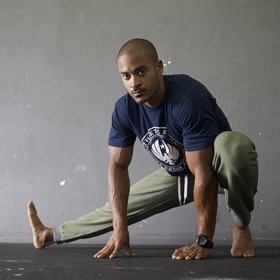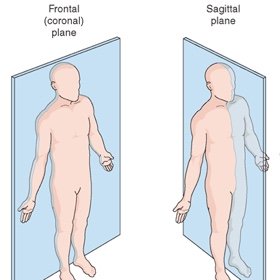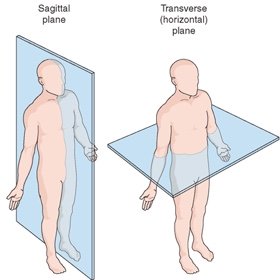
How do you prepare for sport or exercise?
Pre-sport exercises (this includes you runners out there!) take up a very short amount of time and can save you money when you need to see people like me!
So…. why don’t people do them?
For most people I think the answer to this is one of the following:
- You don’t know what to do.
- What you do doesn’t help.
- You think you don’t have enough time (usually because you place no value on pre-sport exercise as it doesn’t seem to help!)
Most people I see preparing for sport or exercise tend to jog about a bit and then do some stretches. For this article I’m going to focus on how to stretch effectively in a way that prepares you for more vigorous exercise.
Most people if asked would probably say they do a little bit of stretching before exercise. Most people usually mean static stretching – where you find a position of stretch and hold it for 30-60 seconds (usually in pain or discomfort!).
WHY do people do this?
I think it’s mainly because other people do it and we are sometimes told to do it by personal trainers or therapists. But most people I know don’t really like it, find it uncomfortable or painful and aren’t sure if they find any benefit.
 So… Why don’t you give yourselves a break and find some exercises that will help improve performance, decrease recovery time AND be relatively painless.
So… Why don’t you give yourselves a break and find some exercises that will help improve performance, decrease recovery time AND be relatively painless.
Just to clarify your question – ‘YES I AM SUGGESTING YOU DON’T DO STATIC STRETCHING AS A WARM UP ANYMORE!!!!’
What should we do then?
Well for quite a few years the idea of dynamic stretching has become more and more popular. This is where you rhythmically take a part of your body (usually a limb) through a range of movement that will both lengthen and shorten the muscles of that limb in a sequential and functional way. What this means is to use the muscle as it’s used during exercise. And this seems to have proven benefits over static stretching
Static stretching results in the muscles actively working against the natural movement of the body and leaves you with a period where they are a bit weaker and do not fire properly when asked to. You can see that this would negatively impact the sport or exercise you are about to do.
Dynamic stretching on the other hand, works the muscle in a full range and within a normal function i.e. it does what muscles do, which in simplistic terms is to shorten and lengthen.
We can go one step further by explaining that during dynamic stretches we are getting the muscles to REACT to the movement in the same way it would when you use them in exercise. When you move, your muscles contract while lengthening in order to decelerate movement. This stops your joints from going beyond their range of movement and thereby protects them from injury. Clever huh!
Sounds good doesn’t it? This first step toward a better way of working your muscles pre exercise is going to be a game changer for you.

We can go further still than dynamic stretching. I’m going to assume that some of you already know about the benefits of dynamic stretching over static stretching and now tell you about 3-dimensional dynamic stretching.
The modality of the exercise is the same as dynamic stretching but with a 3-dimensional stretch you work the muscles in all three planes of motion at the same time.
When we think about human movement we should be thinking of it in 3-dimenions. We call these planes of motion. The planes of motion are sagittal, frontal and transverse. Have a look at the picture below and see that on the Frontal plane we can think of any movement along that plane, e.g. your arm going out to the side of you, your head tilting to the side.
A sagittal plane example could be a forward bend at the hip or an arm reaching out in front of you.
In the transverse plane it can be easier to imagine looking down on top of someone and the movement tends to be rotational; for example, your head turning to the side, or twisting around at the waist to look behind you.
Obviously as we live our lives our movements are generally made up of all these planes at the same time and if our bodies are moving like this then you can be sure that our muscles are working like this too.
Unlike so many of the text books out there describing muscle action in 2-dimensions we can think of them working in 3D which is much more accurate.
SO, if they work like that why don’t we ‘stretch’ them like that?
The difficulty of 3-D stretching is in the understanding of the precise movements required in order to achieve the ‘stretch’. If you know where the muscle begins and ends you can pretty quickly work it out. Although it is always better to have some hands on instruction when starting 3D stretches I have tried to write an example below so that you can have a go at home.
This is a Latissimus Dorsi muscle (in the back) ‘stretch’.
For this exercise to work you will need to be able to hold on to something that will support most of your body weight when pulling on it, a door frame would work well.
- Hold on to the ‘door-frame’ with your left hand in front of you and lean away from it while curling your back into a C-shape so that your tail is tucked between your legs and your chest is facing down a bit. You should feel a gentle stretch in your back on the left side.
- Side bend your back to the right while dropping the pelvis in the direction of the floor on the left. This should increase the stretch a little.
- Finally reach with you right hand underneath your left arm as far as you can. This should increase the stretch again. Now that you have found the position of stretch you simply move in and out of that position. Never holding it at the end of range just reaching as far as you can and coming back again.
This of course can be done on both sides just swap over the instruction left to right and visa versa.
How did you get on? Obviously it is easier when someone is walking you through it but I hope you managed to at least get the idea of 3D stretching!
If you still need some help you can follow this link to see a brief video of it:
https://vimeo.com/223129527/ba318099c0
 The results are great. Whether my clients know they are doing 3D stretching or not I have seen people’s relationship to the stretch and indeed to their body change. Mostly it doesn’t really feel like stretching and people feel as if they are benefitting directly from them. Gains people find are increased mobility, pain reduction, injury prevention & rehab, decreased recovery time as well as a new love for pre-sport ‘stretching’!
The results are great. Whether my clients know they are doing 3D stretching or not I have seen people’s relationship to the stretch and indeed to their body change. Mostly it doesn’t really feel like stretching and people feel as if they are benefitting directly from them. Gains people find are increased mobility, pain reduction, injury prevention & rehab, decreased recovery time as well as a new love for pre-sport ‘stretching’!
So the next time a personal trainer, therapist or a friend tells you to stretch in one position for 30-60 seconds let them know that there is a new way to do it.
If you want to be one of the people in the know and make transformative changes to the way you work with exercise, come to see me and I can help you not only discover how to find these ‘stretches’, but assess which ones you need to do most!
I look forward to helping you start discovering the benefits of 3D stretching soon.
Leon Baugh Osteopathy and Movement.



